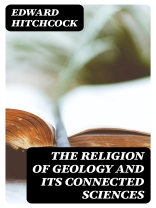In ‘The Religion of Geology and Its Connected Sciences’ by Edward Hitchcock, the author explores the relationship between religion and science, particularly geology. Written in a scholarly style, Hitchcock delves into intricate geological concepts while connecting them to spiritual beliefs and morality. The book is a testament to Hitchcock’s expertise in both the scientific and theological realms, showcasing his ability to bridge the gap between the two disciplines. This work is a product of the 19th-century intellectual environment, where science and religion were often in conflict but also influenced each other. Hitchcock’s writing style is clear and concise, making complex geological theories accessible to a wider audience. His arguments are thought-provoking and provide a unique perspective on the intersection of faith and the natural world. Edward Hitchcock, a renowned geologist and theologian, was deeply interested in exploring the connections between the physical and metaphysical realms. His background in both fields allowed him to navigate complex scientific theories while maintaining a spiritual perspective. Hitchcock’s passion for educating others on the harmony between religion and science is evident throughout the book, making it a must-read for those interested in this intersection. ‘The Religion of Geology and Its Connected Sciences’ is recommended for readers seeking a deeper understanding of the relationship between science and religion. Hitchcock’s insightful analysis and compelling arguments make this book a valuable resource for anyone interested in the intersection of faith and natural sciences.
Sobre o autor
Edward Hitchcock (1793–1864) was a renowned geologist, paleontologist, and educator who profoundly impacted the intellectual and scientific discourses of the 19th century. Hitchcock served as the third President of Amherst College from 1845 to 1854, where he was also a professor of Natural Theology and Geology. A dedicated scholar, his integration of science and religion is most notably presented in his seminal work ‘The Religion of Geology and Its Connected Sciences’ (1851), where he argued for the harmony between scientific discoveries in geology and the biblical accounts of creation. Hitchcock’s approach to science was characterized by a meticulous commitment to field research and a pedagogical style that emphasized the compatibility of faith and science. His influence extended beyond academia into the burgeoning field of American geology, where his mapping and stratigraphic studies laid foundational work for future geological surveys. Throughout his career, Hitchcock published extensively, contributing both to the scientific community and the broader public’s understanding of geological phenomena through lectures and writings. His literary style combined scholarly rigor with an accessible prose that sought to engage a wide audience in the reconciliation of science with religious belief, a recurring theme in his oeuvre. Hitchcock’s legacy is enshrined in the numerous fossils, footprints, and geological features named after him, securing his place as a pivotal figure in the early American scientific landscape.












